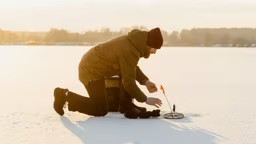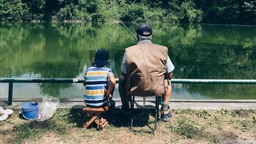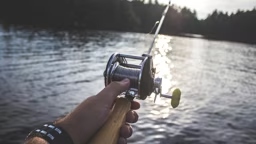Confession: I am a meat-and-potatoes kind of guy and totally dislike eating
fish.
When I tell others about my eating preferences, they usually laugh because they know how much I love to fish. I do keep and clean some fish for my family and friends to eat, but if none of them liked fish I would probably release everything I caught.
When to Keep
So even though I am a strong proponent of catch-and-release fishing, there are circumstances in which fish should be harvested. If your cabin is on a small
lake, you should probably keep as many bluegill and sunfish as allowable by law because these prolific breeders will overpopulate the lake in a hurry.
If your lake contains a bunch of small skinny bass, the fish are stunted due to overpopulation, and some of those fish should be harvested to help improve the predator-prey balance.
Fish that are deeply hooked, injured or worn out after a long fight should also be kept.
When to Recycle
Tournaments have proven the value of recycling fish through catch-and-release tactics. Some of the top bass fisheries in the country continue to churn out quality fish despite heavy tournament pressure.
If everyone kept bass, walleye, musky (and any other fish that produce less offspring than sunfish), populations of these fish would be decimated due to today’s increased fishing pressure. By releasing these game fish, we ensure that our lakes and rivers continue to produce quality fishing for many years.
Catch-and-Release Tips
The following tips will allow you to release your fish unharmed so they can grow larger and provide future thrills at your favorite fishing spot.
1. Use artificial lures.
Hook wounding is injurious to fish, but studies have shown that only a small percentage of fish landed and released die from these wounds. In the booklet “Keeping Bass Alive,” fisheries biologists Gene Gilliland and Hal Schramm claim “hooking mortality probably averages only one to two percent for anglers catching bass on artificial lures.” This is most likely because they don’t continue swallowing the lure once they realize it’s artificial.
2. Ditch the net.
Some fish have a tendency to roll in a net and get your lure and their fins hung up in the netting, which tends to prolong the time the fish is out of water. If you must use a net, try to keep the fish and net in the water while you remove the hook and then let the fish swim out of the netting to freedom.
3. Wet your hands.
Fish secrete a protective slime from glands in their skin that is an effective barrier against disease. Handling a fish makes it more susceptible to pathogens if you accidentally disrupt or remove the slime. Wetting your hands and your net before handling a fish will help prevent disturbing the slime coat. You can also help fish keep their protective slime by preventing the fish from flopping on a dry
boat deck or dock flooring.
4. Avoid the gills.
Essential oxygen passes from water to fish through the fish’s gills so you should take special care not to touch or damage gill filaments when unhooking and handling fish.
5. Go vertical.
When handling a fish to remove a hook or for taking a photo, hold the fish vertically by its lower jaw. Never hold the fish horizontally by the jaw alone because the torque created by holding the fish in this position causes tissue damage to its jaw.
6. Careful keeping.
For kids who like to keep their fish – no matter how small it is – and show it off to everybody, make sure you have a fish basket or box on your dock. After taking a quick photo, place the fish in the basket if you can’t convince the child to release it. Make sure the basket can be lowered down to a level that has sufficient oxygen in the water so the fish can survive a night of captivity. Most kids will forget about the fish by the next day, so you can go down to the dock and release the captive. Avoid keeping fish on a stringer by your dock, as turtles may devour your catch, stripping the stringer clean.
7. Cut the hook.
Rather than trying to pry the hook out of a fish’s gullet and mortally wound the fish, it’s better to cut the point and barb off a deeply embedded hook that has penetrated through the throat or gills. There are differing opinions on cutting the line and leaving a deeply embedded hook in a fish. Some say the fish’s digestive acids will eventually dissolve the hook, but recent studies show more hooks have corrosion-resistant metals and special coatings that prevent gastric acids from quickly dissolving the hooks. If you can’t get those hooks out, it probably would be best to keep the fish.
See also How to Keep Your Dog Safe During the Summer Heat
8. Keep the stress level low.
Each exposure to air increases stress on a fish. So if you want to take photos of your catch and then release it, keep the fish submerged while the photographer gets the camera ready. Pull the fish out of the water when the photographer is ready and after the photo session, gently lower the fish back into the water to release it.
The next time you go fishing, consider catch-and-release as a great way to have a great day fishing both today and again in the future.
Author John Neporadny releases most of the fish he catches in hopes of catching them later when they become lunkers.











